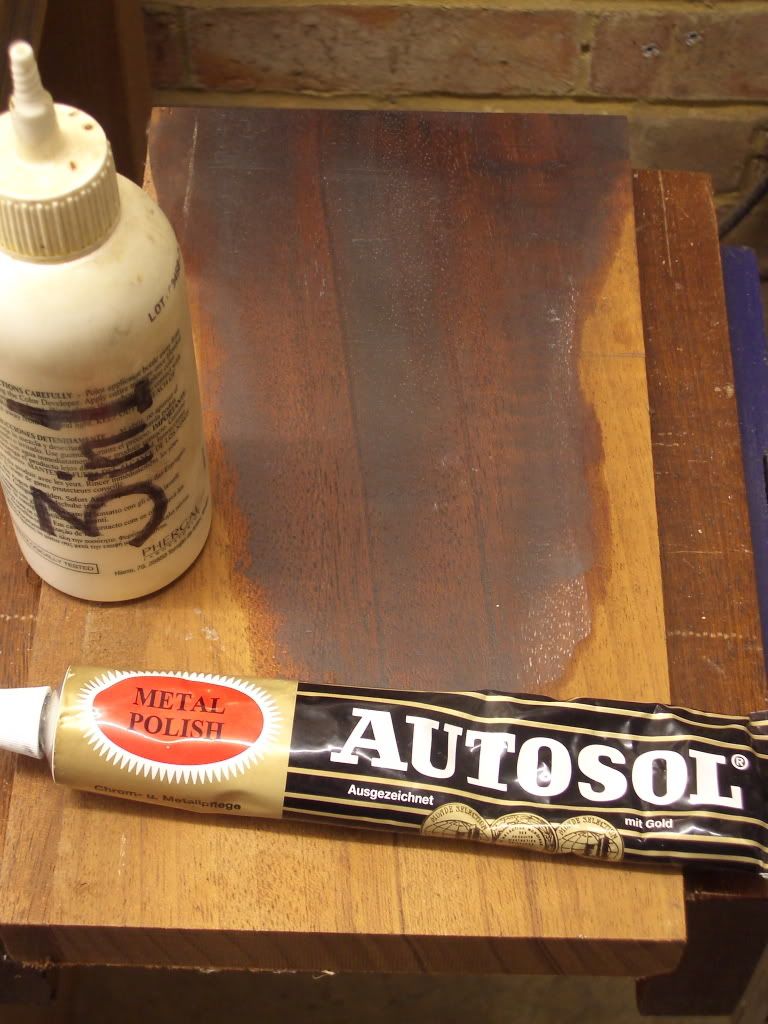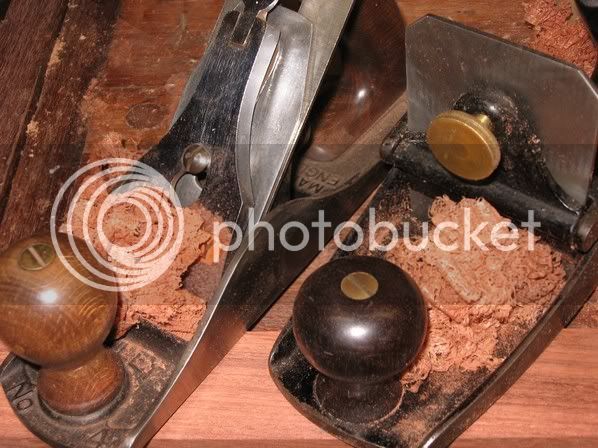Eric The Viking
Established Member
- Joined
- 19 Jan 2010
- Messages
- 6,599
- Reaction score
- 76
I'm struggling with some nasty stuff at the moment: purpleheart.
'twas a silly idea in the first place, but anyway: sanding it and going down through the grits does give a nice finish, and pretty flat too, but not good enough. 'tis flatness I need, as well as a good finish.
I tried a scraper on it with good results, but my thumbs aren't going to survive the amount of flattening necessary, I fear, so I was looking at a Stanley/Record pattern scraper plane, the sort that looks like an overgrown spokeshave.
It ticks a lot of boxes: simple, probably comfortable, sensible curve adjustment (instead of my thumbs!), not expensive either. But I've never used one. I know how to make and set up a cabinet scraper edge, and can get pretty good shavings with one, but I noticed these use a thicker blade than I'm used to. Does that make them harder to fettle?
Lots of questions but no idea as to the answers! Can anyone advise please?
If they're really awkward to use, I'll stick with my piece of tool steel and book the thumb surgery now!
Cheers,
E.
(who turned into an old crock years back)
'twas a silly idea in the first place, but anyway: sanding it and going down through the grits does give a nice finish, and pretty flat too, but not good enough. 'tis flatness I need, as well as a good finish.
I tried a scraper on it with good results, but my thumbs aren't going to survive the amount of flattening necessary, I fear, so I was looking at a Stanley/Record pattern scraper plane, the sort that looks like an overgrown spokeshave.
It ticks a lot of boxes: simple, probably comfortable, sensible curve adjustment (instead of my thumbs!), not expensive either. But I've never used one. I know how to make and set up a cabinet scraper edge, and can get pretty good shavings with one, but I noticed these use a thicker blade than I'm used to. Does that make them harder to fettle?
Lots of questions but no idea as to the answers! Can anyone advise please?
If they're really awkward to use, I'll stick with my piece of tool steel and book the thumb surgery now!
Cheers,
E.
(who turned into an old crock years back)






































